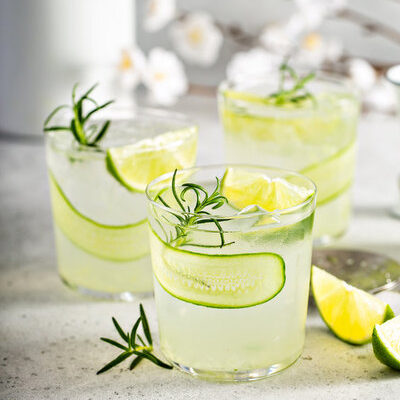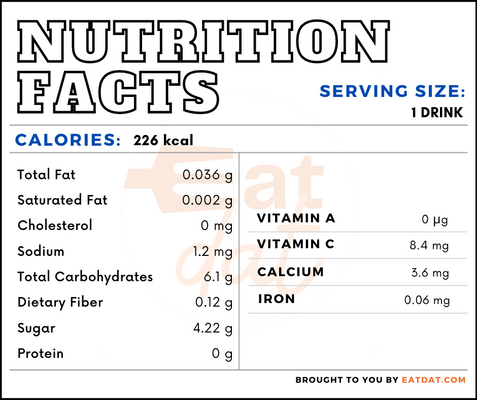
Gimlet
What is a Gimlet?
The gimlet is a cocktail made with gin and lime juice. It is classified under the gin sour family of cocktails. This cocktail has many variations and the gin may even be replaced with vodka. Some recipes insist that the citrus element should be lime cordial. The original recipe was invented by British sailors and the name of the drink comes from a small tool called ‘gimlet’ used to tap the barrels of alcohol stored on ships.
- This cocktail has a sharp and sweet taste.
- It is a warm weather cocktail and may be consumed in summer.
Some of the most popular gin-based cocktails include:
- Gimlet
- New New York Sour
- 50/50 Martini
- El Chapo
- Tom Collins
- Bee’s Knees
- Gin Rickey
- Singapore Sling
- Rosie Lee
- Boat House Punch
Origin of gimlet
This cocktail was invented in the 17th century by English sailors. Doctors John Woodal and James Lind discovered that scurvy, a serious problem within the navy, could be combated by consuming citrus. Therefore, they recommended a healthy dose of citrus juice for sailors. Disregarded at first, this recommendation was later followed by Rear Admiral Alan Gardner on a 23 week voyage to India in 1794.
By 1800, large supplies of lime juice were provided to the navy and by 1867, the beverage became mandatory. The sailors mixed lime juice with rum to make citrusy, and the officers mixed it with gin to make gimlets. The cocktail was extremely popular among the British and European populations in the Far Eastern countries like India, Sri Lanka, Singapore, Malaysia, Hong Kong, and China.
Nutrition
Nutritional profile for gimlet (1 drink):

In addition, gimlets have magnesium, phosphorus, potassium, folate, and carotene. However, gin has no nutritional value and without any vitamins and minerals, has empty calories. Lime juice has a high concentration of vitamin C, which keeps the immune system healthy. Other nutrients that limes contain include iron, calcium, vitamin B6, thiamine, and potassium. Also, lime juice provides antibacterial, antioxidant, and phytochemical properties. As with any other alcoholic drink, overconsumption of it can result in a change in the brain’s functioning patterns, liver cirrhosis, pancreatitis, heart problems, strokes, different types of cancers, as well as affect overall immunity.
Commercial production
For preparing a gimlet, the ingredients required are gin and lime cordial. First, the ingredients are added along with ice into a cocktail shaker and shaken well. Then, the cocktail is poured into a cocktail glass and served chilled. A lime wedge or lime zest spiral is used as a garnish. The gin may be replaced by vodka, if preferred.
Gimlet recipes
This cocktail is a classic recipe that has undergone several changes since its inception. This makes it adaptable and has given rise to different variations. Here are a few recipes to try:
- Classic Gimlet
- Basil Vodka Cocktail
- French Gimlet
- South Side
- Groovy Gimlet
- Cucumber Gimlet
- Rhubarb Gimlet
- Yuzu Cocktail
- Plumdog Millionaire
FDA regulations
The TTB classifies gin as a product obtained by original distillation from mash, or by re-distillation of the distilled spirits, with juniper berries and other aromatics. Gin must be bottled at 80⁰ proof. Different types of gin are covered under this description. The FDA defines lemon juice as the unfermented juice obtained from ripe lemons from which seeds and excess pulp are removed. The acidity of concentrated lemon juice must not exceed 15 percent of the acidity of the finished food.
References
Simon Difford, Gimlet Cocktail, Difford’s Guide for Discerning Drinkers, https://www.diffordsguide.com/encyclopedia/445/cocktails/gimlet-cocktail
National Institute of Alcohol Abuse and Alcoholism, Alcohol’s Effects on the Body, https://www.niaaa.nih.gov/alcohols-effects-health/alcohols-effects-body
Hughes, N. (1992), “Gin”, Nutrition & Food Science, Vol. 92 No. 4, pp. 14-16. https://doi.org/10.1108/EUM0000000000962
Oikeh, Ehigbai I et al. “Phytochemical, antimicrobial, and antioxidant activities of different citrus juice concentrates.” Food science & nutrition vol. 4,1 103-9. 30 Jul. 2015, doi:10.1002/fsn3.268, https://www.ncbi.nlm.nih.gov/pmc/articles/PMC4708628/
